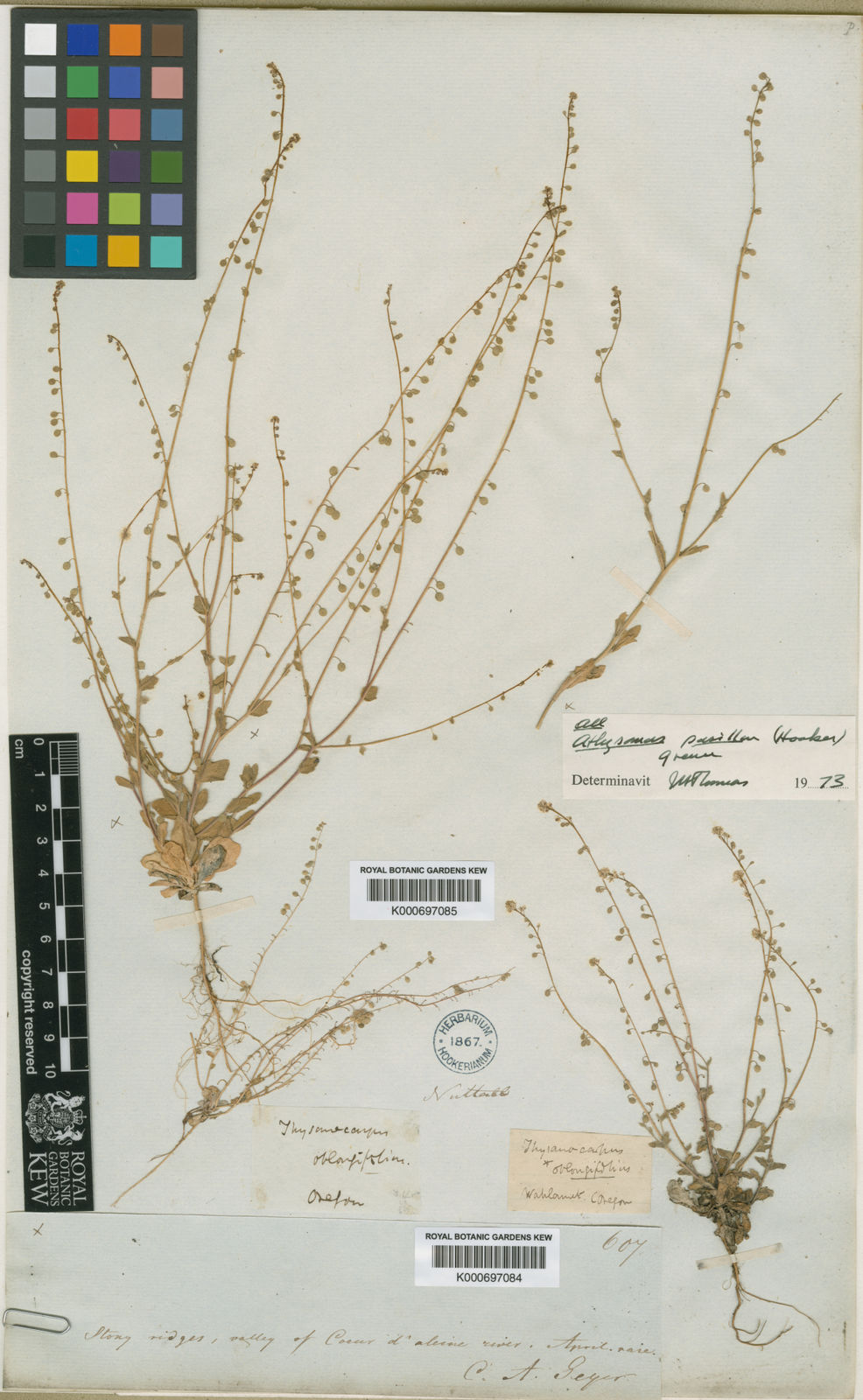Family: Brassicaceae
Author: (Hook.) Greene
Bibliography: Man. Bot. San Francisco: 14 (1894)
Year: 1894
Status: accepted
Rank: species
Genus: Athysanus
Vegetable: False
Observations: W. Canada to Mexico (Baja California)
Description
The Common sandweed, scientifically known as Athysanus pusillus, is a captivating and modest member of the Brassicaceae family. First described and documented in the groundbreaking “Man. Bot. San Francisco” in 1894 by the renowned botanist Edward Lee Greene, this plant holds a special place in botanical studies due to its widespread distribution and unique adaptive characteristics.
Athysanus pusillus is native to an extensive range spanning from Western Canada down through the United States and into Baja California in Mexico. This broad geographical spread highlights the plant’s versatility and adaptability to various climatic conditions and soil types. Despite its unassuming appearance, the Common sandweed thrives in environments where other plants might struggle, making it a subject of interest for both botanists and environmental scientists.
Characterized by its small, delicate structure, the plant often goes unnoticed in the wild, yet it plays a crucial role in its ecosystem. As a member of the Brassicaceae family, it shares common features with more widely recognized relatives, such as mustard plants. These features include small, often inconspicuous flowers and simple, yet effective, methods of seed dispersal that contribute to its successful propagation across vast areas.
The Common sandweed’s resilience and adaptive strategies are key areas of study for understanding plant survival and distribution in varied habitats. Its presence in North America, covering regions with differing climate patterns from the cooler areas of Western Canada to the warmer zones of Mexico, provides valuable insight into the environmental factors that influence plant life.
Through a closer examination of Athysanus pusillus, researchers can gain a deeper appreciation for the intricate balance of ecosystems and the specific adaptations that enable certain species to flourish in diverse conditions. The study of such plants not only enriches botanical knowledge but also informs conservation efforts, ensuring that we preserve the delicate tapestry of life that sustains our natural world.
Common Names
Eng: common sandweed, sandweed
Fra: athysane nain
En: Common sandweed, Dwarf anthysanus, Sandweed
Fr: Athysane nain
Synonyms
- Athysanus pusillus var. glabrior (S.Watson)
- Thysanocarpus pusillus (Hook.)
- Thysanocarpus oblongifolius (Nutt.)
Distribution
- Arizona (native)
- British Columbia (native)
- California (native)
- Idaho (native)
- Mexico Northwest (native)
- Montana (native)
- Nevada (native)
- Oregon (native)
- Washington (native)
- New York (introduced)
Additional Images
Flower
Taken Mar 9, 2015 by EOL − Ken-ichi Ueda (cc-by-nc)

© copyright of the Board of Trustees of the Royal Botanic Gardens, Kew.
Sources
- WFO (No URL)
- IPNI (No URL)
- GBIF (https://www.gbif.org/species/5373588)
- POWO (http://powo.science.kew.org/taxon/urn:lsid:ipni.org:names:278766-1)
- PlantNet (https://identify.plantnet.org/species/the-plant-list/Athysanus pusillus (Hook.) Greene)
Specifications
Growth habit>: Forb/herb

